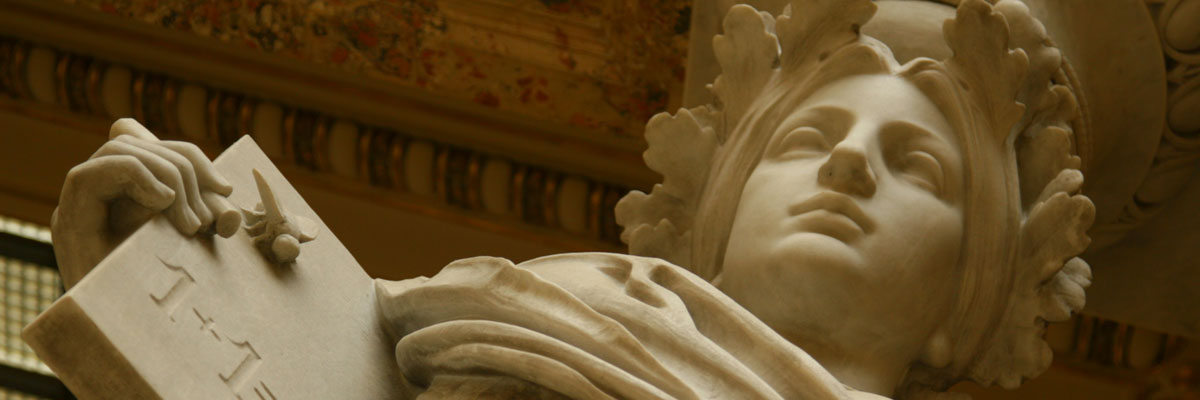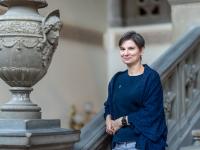
News archive
Search
Selected range: all newsA photo of a moss capsule that resembles a deep-sea predator when magnified has won this year’s Photogenic Science contest. The winning image, “Anglermoss,” shows us that research can also uncover aesthetic beauty hidden from the naked eye. The Photogenic Science exhibition, on view at the Academy’s Science and Art Gallery on Národní Street in Prague from 4 December 2025 to 30 January 2026, showcases four dozen photos from the scientific realm.
After the spring session of the Academy Assembly of the CAS, which determined the composition of the new Academy Council of the CAS, its members divided up their roles. With several months’ hindsight, they now outline their intentions. What are their priorities, and how do they plan to shape where the Czech Academy of Sciences will be heading?
After the spring session of the Academy Assembly of the CAS, which determined the composition of the new Academy Council of the CAS, its members divided up their roles. With several months’ hindsight, they now outline their intentions. What are their priorities, and how do they plan to shape where the Czech Academy of Sciences will be heading?
Dana Plavcová is the first ombudsperson in the history of the Czech Academy of Sciences. In her new role, she focuses on preventing inappropriate conduct and supporting respectful communication and equality across the CAS institutes. In which instances can employees turn to her, and what does her job actually involve?
As climate change alters living conditions, animals are migrating toward new habitats. How are their relationships with humans being reshaped? The new research project INVANISH, funded by an ERC Consolidator Grant, sets out to answer this question. It will be led by Italian anthropologist Deborah Nadal at the Institute of Ethnology of the Czech Academy of Sciences.
Even eighty years after the end of World War II, stories locked away in the recesses of memory are still coming to light – like the overlooked past of the many thousands of Czechoslovaks who served in the German army. “We tend to see World War II in fixed images that we consider unquestionable and reflective of reality. But it turns out it’s not that simple,” historian Zdenko Maršálek stresses. The phenomenon of non-German soldiers serving in the Wehrmacht reveals just how much our perception of the past can be shaped artificially. The article came out in the A / Magazine of the Czech Academy of Sciences.
Moving to a foreign country can be stressful. That is why, for two decades now, EURAXESS Czech Republic has been guiding researchers and their families through it all, from visa formalities to settling into a new environment. To date, it has supported more than 10,000 researchers. Below, Markéta Padevětová and Zuzana Maršálková from the Centre of Administration and Operations of the Czech Academy of Sciences explain how the activities of the Czech branch of this European network are evolving.
The Egyptians, Greeks, and Romans alike used fragrant balms, oils, and perfumes in rituals, medicine, and cosmetics. Now, more than 2,000 years later, researchers in Prague are working on “reviving” these ancient scents. The article came out in the 2025 English issue of A / Magazine.
Not all bugs live fleeting lives. Royal termite pairs can survive for several decades, setting records for longevity in evolutionary terms as well – their advanced colonies have been around since the dinosaur era. The longevity of termite kings and queens is one of the topics studied by Robert Hanus’s research team at the Institute of Organic Chemistry and Biochemistry of the Czech Academy of Sciences. They’ve been maintaining laboratory termite colonies in the basement of their headquarters in Prague–Dejvice for several decades. What have they managed to find out about termites’ “elixir of youth”? How are bees, ants, and termites similar to each other, and what differentiates these representatives of social insects? The article is featured in the 2025 English issue of A / Magazine.
The first successful project bears the names of Leoš Valášek from the Institute of Microbiology of the Czech Academy of Sciences (CAS) and Julius Lukeš from the Biology Centre of the CAS. Together with international colleagues, they will pursue research that could lead to a better understanding of genetically determined rare diseases. The second project, led by Jan Zouplna from the Oriental Institute of the CAS, will focus on studying the political systems of countries in the MENA region.
The Czech Academy of Sciences (the CAS)
The mission of the CAS
The primary mission of the CAS is to conduct research in a broad spectrum of natural, technical and social sciences as well as humanities. This research aims to advance progress of scientific knowledge at the international level, considering, however, the specific needs of the Czech society and the national culture.
President of the CAS
Prof. Eva Zažímalová has started her second term of office in May 2021. She is a respected scientist, and a Professor of Plant Anatomy and Physiology.
She is also a part of GCSA of the EU.









